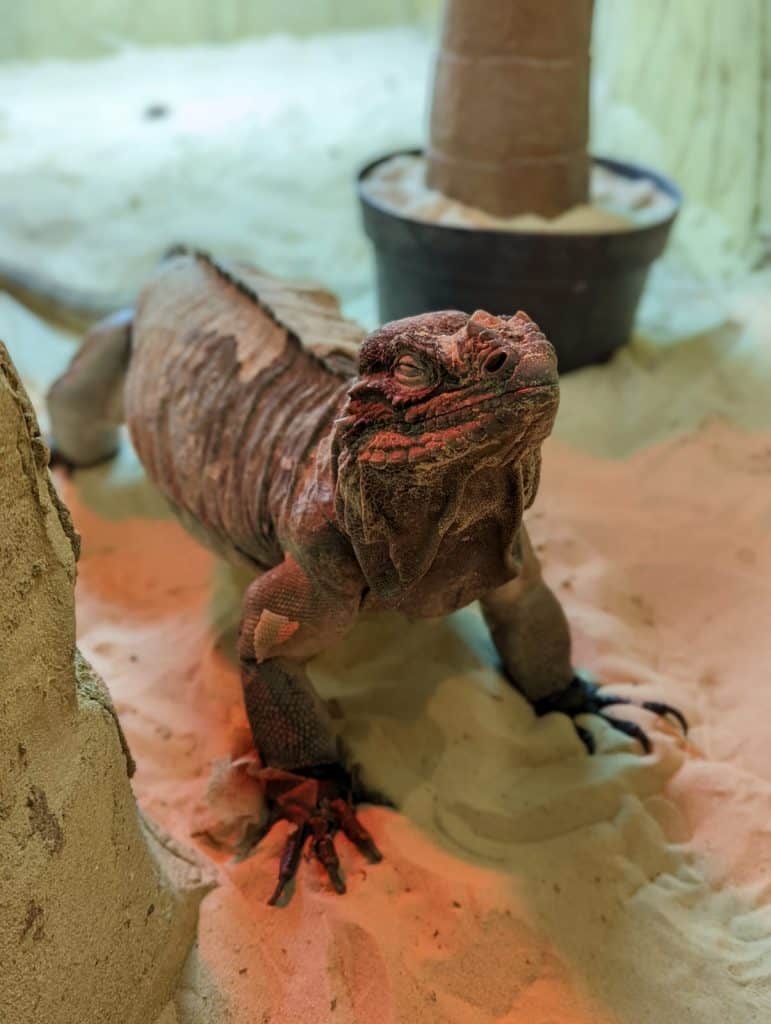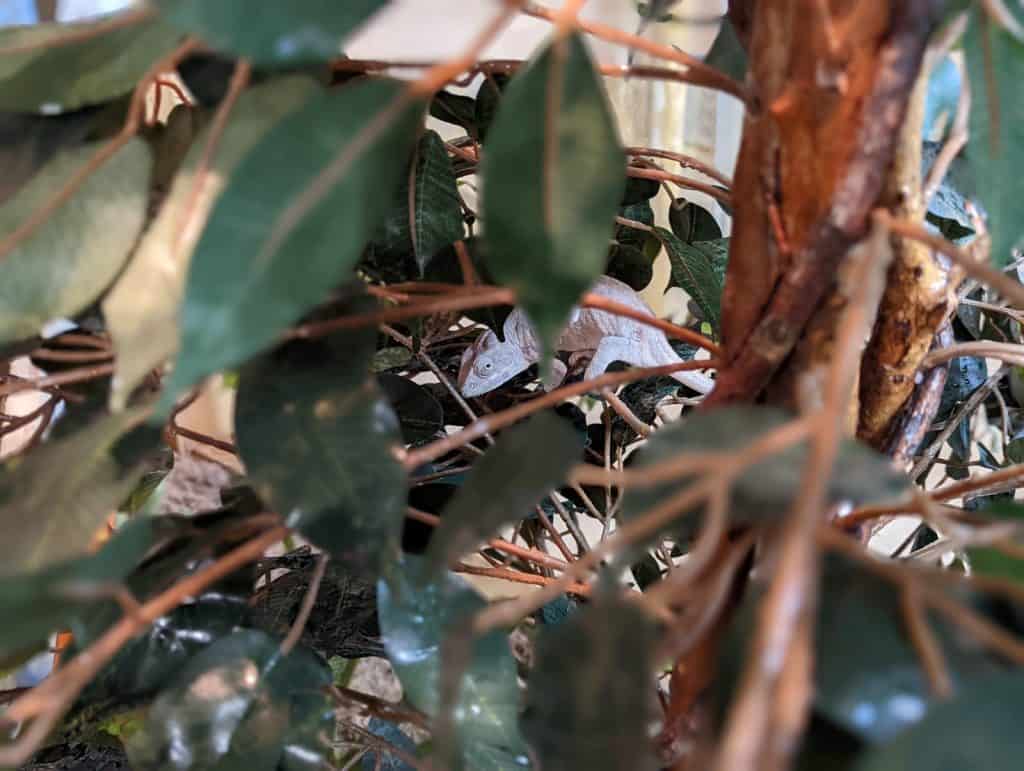As we prepare to celebrate the upcoming World Lizard Day, I hope everyone is enjoying their summer holidays. Whether you are off school and enjoying the break, going on holiday, or just enjoying the warm weather that we’ve been having.
This blog is going to give you a brief update on the lizards that have moved into their new enclosures within the developing Reptile House and an update on our building work.
Rhinoceros Iguanas
The first lizard I’m going to talk about is the Rhinoceros Iguana. We have had our three Rhino Iguanas for several years now. We have one male and two females. The male and our youngest female were born here at Wingham back in December 2012.

Our oldest female is the dominant one in the group. She likes to take charge when it comes to bossing the other two around, especially at feeding time. To combat this, at feeding time, the keepers place three separate feeding trays into the enclosure. This ensures that each lizard can have their own tray. They really don’t like to share their food.
This endangered species is endemic to the Caribbean Island of Hispaniola and its offshore islands. They inhabit areas of tropical, dry and moist lowland forest and shrublands. The dry forests usually have large areas of rocky limestone which is where the iguanas prefer to spend their nights. There they can retreat into caves and crevices safe from predators as they are a diurnal species (awake in the daytime and asleep at night).
Unfortunately, this species is in decline across most of its range. This is due to habitat degradation from human development and invasive species including predation from dogs and cats. The IUCN “estimate that the percent reduction over the past two generations and one generation into the future, approximately 65 years, will be at least 60% in total.” Cyclura cornuta (Hispaniolan Rhinoceros Iguana) (iucnredlist.org).
In their new enclosure they have a large rocky structure in the middle. It has two basking areas on top and a large UV lighting unit. Around their enclosure they also have an extra basking area. This also has a large UV lamp, heat tubes and another red light heated basking area. The extra space and basking areas have meant that we have seen a huge decline in aggressive behavior between the iguanas. They really have settled into their new enclosure fabulously.

Panther Chameleons
The second lizard I will talk about is the Panther Chameleon. This species is new to the park, and we currently have three females in the Reptile House. Plus, there is another female and male still in our off-show area awaiting to join our trio. However, they are a little on the smaller side.
These three girls have settled in well to their new enclosure and have made sure to fully explore everywhere to find their own perfect spot.

The Panther Chameleon is found in the northern and eastern parts of Madagascar. Their name panther chameleon refers to the unique patterns that they have on their skin which kind of look like leopard or panther spots.
The IUCN Red List categorises this species as ‘least concern’. That means that currently their wild population is not under threat and is considered stable.
Being sexually dimorphic, the males are much larger and more brightly coloured than the females. This makes them stand out significantly. There are even colour variations between the home ranges on Madagascar, with males from the areas of Nosy Be, Ankify, and Ambanja typically being a vibrant blue. Whilst those from Ambilobe, Antsiranana, and Sambava are red, green or orange.

The keepers currently spend a lot of time with this lizard species as they need to be sprayed and checked three times daily to ensure their humidity is kept high and that they are feeding well. Keepers are ensuring that these females are feeding well in their new area by hand feeding them with tweezers and then leaving the remainder of their food in an easy access tub.
Reptile House Update
A lot of people ask, when the new Reptile House will open and where the animals are now. So…
Currently there is no set date for the Reptile House to reopen. However, we hope it will be sometime in the early part of next year. This work takes a lot of time to complete and must be done right. They are all new, larger enclosures, specifically designed for their inhabitants and each enclosure has its own dedicated theme. The maintenance staff are working tirelessly to complete each enclosure to the highest standard. The electricals within the building have also been a huge task, which is still ongoing. Meanwhile, each pond area also has its own filtration and pump systems fitted.
We still have the rest of the inhabitants in our off-show areas too. They are being fully cared for by their dedicated keepers until they are ready to move back in.
If you have visited the park recently you may also have seen that the old pheasant aviaries, fruit bat and night monkey enclosures have been torn down. This is to make way for our brand-new Nocturnal House which will be connected to the Reptile House.
For further updates on our new developments why not sign up to our monthly newsletter here. It will give you regular behind the scenes photos and updates to follow our progress.


